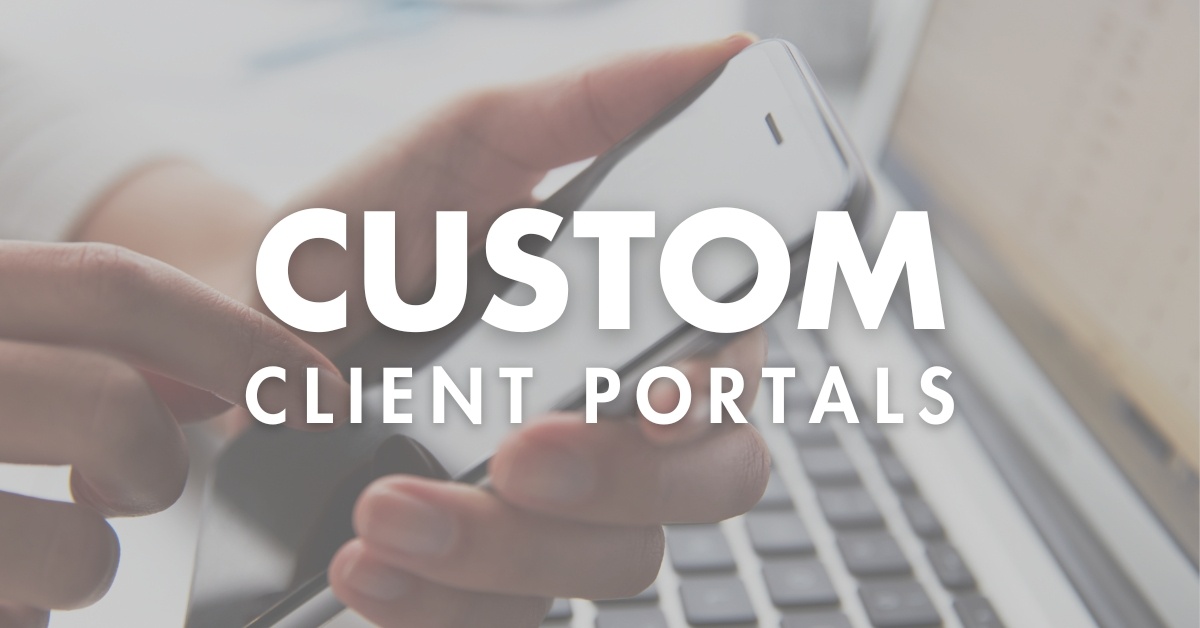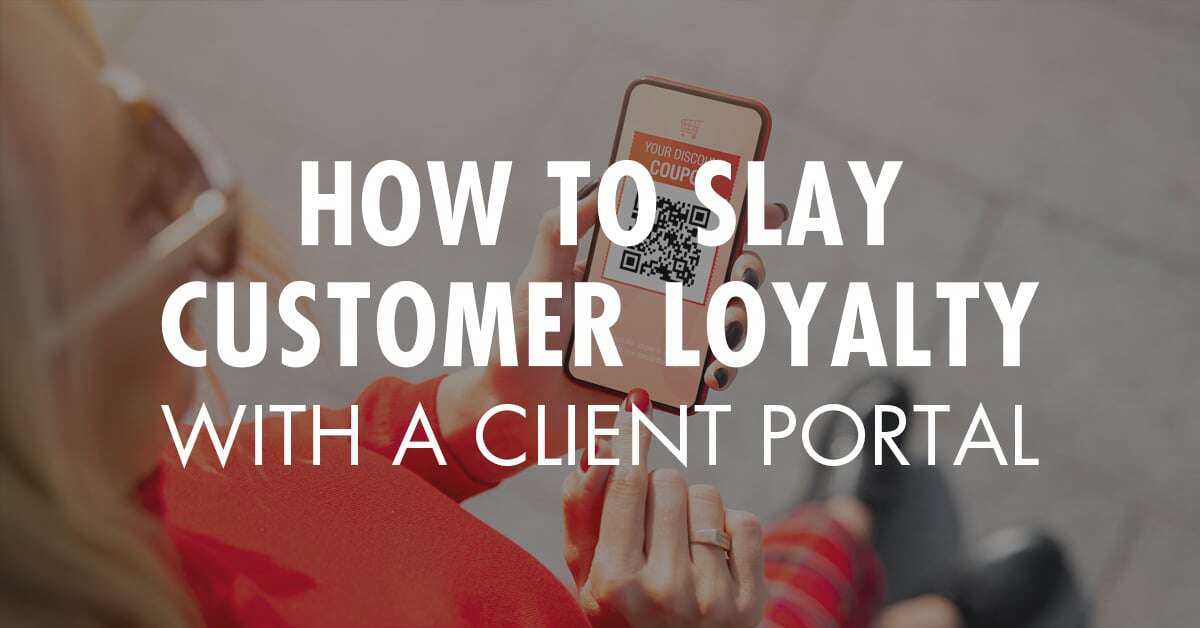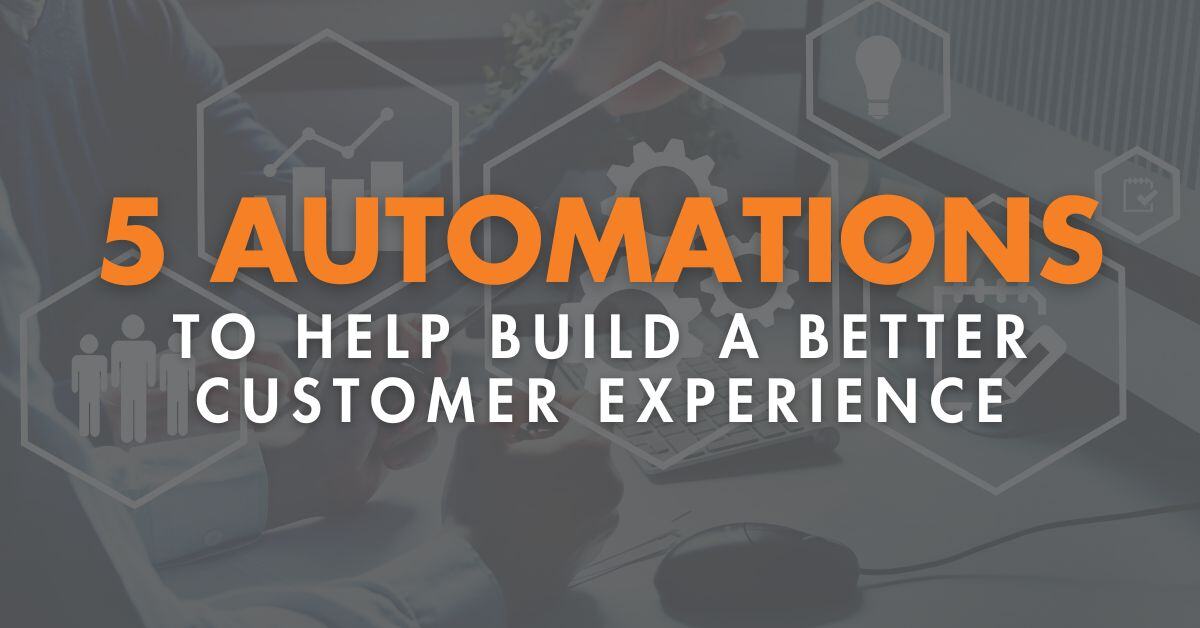3 min read
The Benefits of a Get-A-Quote Feature
It’s not uncommon to search online for a top manufacturing company and find an outdated website with little to no appeal. Although the...
Improve customer satisfaction and increase operational efficiency with a client portal.
Take control of your operations with customized software solutions.
Help your in-house dev team get more done, faster with our Midwest-based experts.

Ever feel like you're juggling a million emails, documents, and client requests? Client portals are designed to fix that. In fact, they're probably the most common and familiar type of custom web portal you'll encounter. These portals offer a dedicated space to enhance client experiences, streamline communication, and keep data secure. Think of them as your own private online hub for clients, a one-stop shop where they can access essential information and services, making interactions smoother and more efficient.
Essentially, a client portal is a specialized solution for businesses that need a secure and interactive way to connect with customers. Whether it's managing projects, sharing critical documents, or streamlining service requests, a well-designed client portal can integrate seamlessly with your larger digital strategy to help you drive efficiency and engagement with your customer experience.
Let's dive in and explore everything you need to know about custom client portals, and how they can benefit your business.
Essentially, a client portal is a secure, dedicated online environment that facilitates streamlined interaction between a business and its clients. It's a centralized digital platform designed to enhance communication, file sharing, and task management.
Consider it a private, online workspace where clients can access pertinent information, initiate requests, and monitor progress. This eliminates the inefficiencies associated with traditional email correspondence, providing a more organized and efficient experience. By logging into the portal, clients gain immediate access to relevant updates and resources, fostering transparency and accessibility.
Now, you might be wondering, 'Okay, that sounds useful, but what does that actually look like in real life?' Let’s dive into some examples of client portals in action, and you'll see just how versatile they can be.
To see client portals in action, let's look at some familiar examples. You've likely encountered these in your daily life:
These real-world examples demonstrate the widespread use of client portals, showing how they improve efficiency, transparency, and client satisfaction across various industries.
So, you've seen what client portals can do. Now, the big question: do you actually need one? It's not a one-size-fits-all answer, but let's break it down. Instead of just telling you 'yes' or 'no,' let's think about your own situation.
If you answered 'yes' to a few of these, a client portal might be exactly what you need. It's about more than just having a fancy piece of software; it's about making your life (and your clients' lives) easier.
Think of it this way: a client portal is like upgrading from a cluttered desk to a well-organized office. It's about creating a space where everything has its place, and you can focus on what matters most.
Ultimately, the decision comes down to your specific needs and goals. But hopefully, these questions have given you some food for thought.
Alright, so you're thinking a client portal might be the right move. Great! Now, let's map out how to make it a reality. Building a portal doesn't have to be daunting. It's about creating a space that truly works for you and your clients.
By answering these questions, you're not just building a portal; you're crafting a personalized experience for your clients. It's about creating a digital space that strengthens your relationships and enhances your business.
Remember, it's not about being perfect from day one. It's about creating a valuable tool that grows with your business and your clients' needs.
Now that you've thought about why you need a portal and how you'll build it. Now, let's talk about what actually goes inside a client portal. We've seen a lot of portals in action, and here's what we know makes a real difference.
At its core, a solid client portal needs to be secure, easy to navigate, and genuinely helpful. It's about building a digital space that clients actually want to use.
These aren't just fancy add-ons; they're the building blocks of a portal that actually enhances the client experience. It's about creating a tool that's not just functional but genuinely valuable.
Simply put, client portal software is the engine behind those seamless, secure online spaces. It's the technology that allows businesses to build and manage these portals, providing a smooth and efficient way for clients to interact with their services. Think of it as the toolkit that turns your portal vision into a reality.
When it comes to building your portal, you'll generally encounter two main paths: off-the-shelf solutions and custom-built portals. Let's take a look at each:
Beyond just the software, remember that choosing the right vendor is just as important. Take the time to do your research. Look for a partner with a proven track record, strong security practices, and a clear understanding of your business needs. They will be the ones that will help your vision come to life.
Choosing the right software and vendor depends on your specific needs and priorities. Whether you're looking for a quick and easy solution or a completely custom platform, there's a path and partner out there for you.
The price of developing a custom client portal depends on complexity, features, and whether you go for a ready-made solution or a fully custom-built platform.
Important Note: The following cost ranges are rough estimates and should serve as a general starting point. Actual costs can vary significantly based on specific requirements and vendor pricing.
If your vision includes cutting-edge features like AI capabilities, deep integrations with existing systems, or highly specialized functionalities, the investment can easily exceed $200,000. Remember, the more intricate and advanced the portal, the greater the financial commitment.
The 'best' client portal isn't about the highest price tag; it's about the solution that aligns perfectly with your business objectives. While off-the-shelf options serve many businesses well, custom portals offer unparalleled flexibility and long-term value.
Ultimately, building a client portal is an investment. It requires careful consideration of your features, functionalities, security requirements, and overall business objectives. Take the time to sit down, assess your needs, and plan thoroughly. Creating the right client portal will not only enhance your client experience but also contribute to the long-term success of your business.
If you're feeling ready to take the plunge and build your own client portal, here's a detailed roadmap to guide you, with a focus on reflection at each step:
Ultimately, a custom client portal is more than just a piece of software; it's a real advantage for any business looking to work smarter and keep clients happy. It's a really useful tool if you want to make things more efficient, give your clients a better experience, and stay ahead of the curve. When you think about the bigger picture of custom web portals, these kinds of solutions are key to making things run smoothly and building stronger connections with your clients.

3 min read
It’s not uncommon to search online for a top manufacturing company and find an outdated website with little to no appeal. Although the...

3 min read
Customer loyalty has always been critical to your business success. But in recent years, customer demands have shifted, and more and more...

To build a great customer experience, you need efficiency, personalization, and timely follow-ups. As someone who handles your company's client...